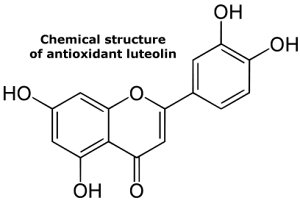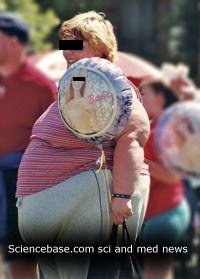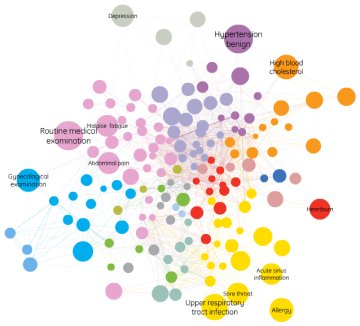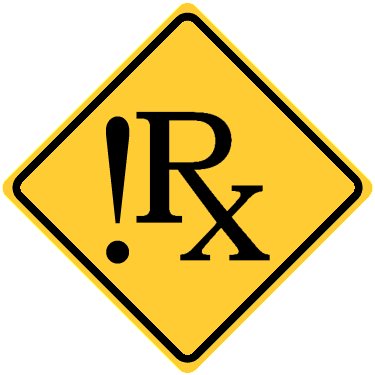 A flavonoid compound found in fruit and vegetables, luteolin, was recently hailed as an anticancer supernutrient by the tabloid media. Aside from the fact that over-dosing on antioxidants could be detrimental to one’s front-line immune response to pathogens, the research was purely laboratory based and said nothing about whether or not luteolin might actually prevent bowel cancer. The compound has the chemical name 2-(3,4-dihydroxyphenyl)- 5,7-dihydroxy-4-chromenone and in the laboratory shows activity as an inhibitor of phosphodiesterase enzymes as well as blocking interleukin 6.
A flavonoid compound found in fruit and vegetables, luteolin, was recently hailed as an anticancer supernutrient by the tabloid media. Aside from the fact that over-dosing on antioxidants could be detrimental to one’s front-line immune response to pathogens, the research was purely laboratory based and said nothing about whether or not luteolin might actually prevent bowel cancer. The compound has the chemical name 2-(3,4-dihydroxyphenyl)- 5,7-dihydroxy-4-chromenone and in the laboratory shows activity as an inhibitor of phosphodiesterase enzymes as well as blocking interleukin 6.
NHS Choices, as ever, dissects the study, saying that the research may have homed in on the specific signalling pathway through which luteolin can kill bowel cancer cells in the laboratory. The study did not investigate whether upping one’s intake of luteolin-rich foods would have any effect on bowel cancer risk.
The lab study is an essential first step to understanding whether luteolin or more likely a chemical cousin might eventually be developed as an anticancer drug, although this is preliminary, fundamental molecular biology not clinical testing and animal studies for initial testing of such a compound are still a long way off. A drug might never emerge from this research.
Luteolin is found in celery, green pepper, thyme, dandelion, perilla, chamomile tea, carrots, olive oil, peppermint, rosemary, navel oranges, and oregano, fruit rinds, woody barks, clover blossom and ragweed pollen. It has also been isolated from Salvia tomentosa.
NHS Choices emphasises that, “It is important to remember that this study used pure luteolin, and not dietary sources of the compound. The effect of dietary luteolin on cancer is not clear from this research.” Of course, one has to presume that eating a diverse mixture of fresh fruit and vegetables as part of a well-balanced diet (whatever that means) is to be encouraged nevertheless.
 Myth 1: Calories Counting Is All That Matters for Weight Management – Calories are the energy content as measured by complete combustion of the food. But, our bodies don’t burn food, they digest, ingest and metabolise it, so different foods even if they have the same “calories” can have a very different effect on our bodies.
Myth 1: Calories Counting Is All That Matters for Weight Management – Calories are the energy content as measured by complete combustion of the food. But, our bodies don’t burn food, they digest, ingest and metabolise it, so different foods even if they have the same “calories” can have a very different effect on our bodies. My wife and I have become addicted to viewing the serial exploits of Dr Gregory House MD, you know, the character played by the inimitable British actor Hugh Laurie. House MD has not only made Laurie very rich and famous and convinced a whole generation of Americans that the nouveaux blues singer is surely an Amercun not a Brit, but has underpinned the emergent psychological infection of seasonal hypochondriasis.
My wife and I have become addicted to viewing the serial exploits of Dr Gregory House MD, you know, the character played by the inimitable British actor Hugh Laurie. House MD has not only made Laurie very rich and famous and convinced a whole generation of Americans that the nouveaux blues singer is surely an Amercun not a Brit, but has underpinned the emergent psychological infection of seasonal hypochondriasis. I just posted an interview with Edzard Ernst in which he discusses his very serious concerns with the widespread, unthinking acceptance of certain forms of alternative medicine. I used a little bit of pseudo-code, !Rx, which was meant to symbolise the opposite of conventional medicine. If Rx is symbolic of a medical prescription from the Latin verb “recipere” meaning “take thou”, then putting the logical operator, !, in front of it makes it read “NOT Rx”, in other words, “don’t take”. Subtle, huh? Feel free to share and re-use the icon.
I just posted an interview with Edzard Ernst in which he discusses his very serious concerns with the widespread, unthinking acceptance of certain forms of alternative medicine. I used a little bit of pseudo-code, !Rx, which was meant to symbolise the opposite of conventional medicine. If Rx is symbolic of a medical prescription from the Latin verb “recipere” meaning “take thou”, then putting the logical operator, !, in front of it makes it read “NOT Rx”, in other words, “don’t take”. Subtle, huh? Feel free to share and re-use the icon. The recent death of Apple boss Steve Jobs is putatively yet another example of how dangerous spurious alternative medicine (!Rx) can be. In October 2003, when Jobs was diagnosed with pancreatic cancer, he turned not to real medicine but to acupuncture, macrobiotic diets, and visits to a spiritualist. If he had seen an oncologist sooner, who knows what might have been his chances?
The recent death of Apple boss Steve Jobs is putatively yet another example of how dangerous spurious alternative medicine (!Rx) can be. In October 2003, when Jobs was diagnosed with pancreatic cancer, he turned not to real medicine but to acupuncture, macrobiotic diets, and visits to a spiritualist. If he had seen an oncologist sooner, who knows what might have been his chances?